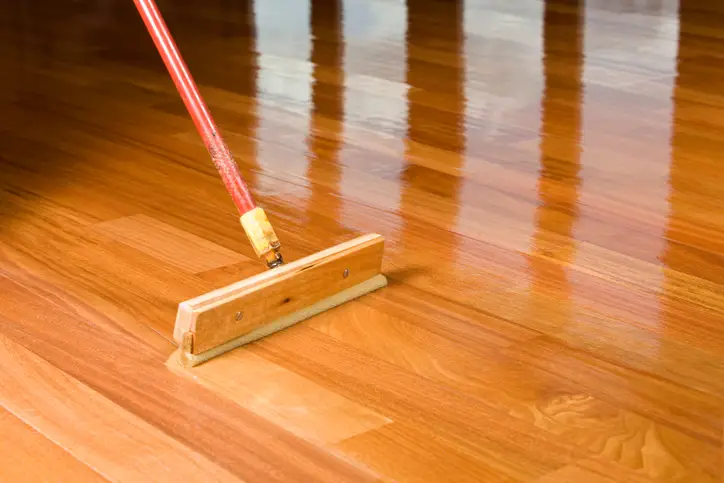If inclement weather or faulty plumbing has left you with standing water on your beautiful hardwood floors, it’s important you know how to clean hardwood floors and minimize the damage. Here’s how to repair your hardwood floors:
- Start by vacuuming up the water with a shop vacuum.
- Next you’ll want to scrub the floor with a mild detergent and disinfectant. To stop mold growth, you’ll want to treat any moldy areas with a TSP (trisodium phosphate) solution.
- Once you’ve scrubbed the mold and discoloration away, rinse the area and use a cloth to dry it.
- Next, you need to allow the floor to slowly dry. Wood drying too quickly is likely to crack. Set up fans and open doors/windows to ventilate the area.
- Nail down any floorboards that have lifted up completely. If your floor is cupping in areas, you can sand down the high sections to level it out.
- The final step to repair your hardwood floors is to refinish sanded areas to protect them from future spills.

The Value of a Finished Hardwood Floor
A water-damaged laminate floor will have to be completely replaced. Hardwoods on the other hand, are durable — plus they can be sanded and refinished. Finishing protects flooring in a few different ways.
First, finishing seals the wood to reduce the absorption of moisture into the planks, which will help control shrinkage and expansion between the winter and summer months. This will also be your first line of defense in the event of unexpected flooding.
The finish also reduces the amount of UV light the wood absorbs from natural light inside of the home. A durable finish will protect your floors from pets’ nails, even in high traffic areas.
Learn more about finishing options.








